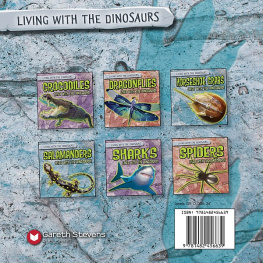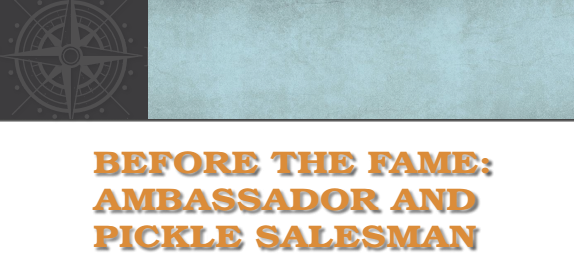Published in 2017 by The Rosen Publishing Group, Inc.
29 East 21st Street, New York, NY 10010
Copyright 2017 by The Rosen Publishing Group, Inc.
First Edition
All rights reserved. No part of this book may be reproduced in any form without permission in writing from the publisher, except by a reviewer.
Library of Congress Cataloging-in-Publication Data
Names: Niver, Heather Moore, author.
Title: Amerigo Vespucci: explorer of South America and the West Indies / Heather Moore Niver. Description: First edition. | New York : Rosen Publishing, 2017. | Series: Spotlight on explorers and colonization | Includes bibliographical references and index. |
Audience: Grade 7 to 12.
Identifiers: LCCN 2015050279 | ISBN 9781477787953 (library bound) | ISBN 9781477787922 (pbk.) | ISBN 9781477787939 (6-pack)
Subjects: LCSH: Vespucci, Amerigo, 1451-1512. | ExplorersAmericaBiography. | Explorers SpainBiography. | ExplorersPortugalBiography. | AmericaDiscovery and exploration Spanish. | AmericaDiscovery and explorationPortuguese.
Classification: LCC E125.V5 N58 2016 | DDC 910.92dc23 LC record available at http://lccn.loc.gov/2015050279
T wo entire continents are named after the explorer, merchant, and navigator known as Amerigo Vespucci. Yet much of his life remains not only a mystery but also a controversy. Curiously, he was hardly known before North America and South America were named after him. He wasnt even the first person to discover what we now know as the Americas. His own voyages occurred several years after Christopher Columbuss infamous first trip.

The name Amerigo Vespucci has long been associated with the very name of the Americas, but his life is a tangle of questions, controversies, and discoveries.
But Vespucci made major contributions to navigation. For example, he was the first to realize that North and South America were not part of Asia, but entirely separate continentseven Christopher Columbus didnt know that! He also developed a process for measuring longitude.
Various letters with conflicting details and dates makes tracing the history of Amerigo Vespucci a challenge at best. Did he take two trips or four? Some claim he took two more, bringing his lifelong voyages to a grand total of six.
Y oung Amerigo Vespucci, spelled Americus Vespucius in Latin, is thought to have been born in Florence, Italy, in 1451. However, no one is exactly sure. Some historians think it is more likely that he was born in 1454. He was the youngest of three sons to his parents, Ser Nastagio and Lisabetta Mini. His father, Nastagio, was a notary. As Amerigo grew up, his religious uncle Giorgio Antonio Vespucci educated him, although his brothers studied at the University of Pisa in Tuscany, Italy. From an early age, Vespucci was interested in reading books and maps.
Vespuccis family was close with the famous Medicis, who had been powerful in Italy for three hundred years. His uncle sent him off on one of his first jobs for the Medici family in Cadiz, Spain. Here Vespucci met and became a trusted friend to Lorenzo di Pierfrancesco de Medici. Vespucci was in charge of the estate of a recently deceased Italian merchant named Giannotto Berardi. He made sure Berardis contract was taken care of by delivering twelve ships to the crown to sail to the West Indies. Once this contract was fulfilled, Vespucci continued working to supply ships with the supplies they needed.

Lorenzo de Medici, illustrated here in front of Florence, Italy, and his rich and powerful family were close with the Vespucci family.

This illustration of the ship Great Harry is similar to the sorts of ships that Vespucci may have stocked in 1499.
Before he set off to sail across the open seas to become an explorer, Vespucci had a number of different jobs. When he was in his twenties, another uncle, Guido Antonio Vespucci, was ambassador of Florence under King Louis XI of France. A job with his uncle sent Vespucci to Paris. Perhaps this trip sparked his interest in travel and exploring.
Other jobs he had before exploring included some in the business trade, which he did only under pressure from his father. According to writer Ralph Waldo Emerson, Vespucci spent some time selling jewels and even pickles! In 1499, he moved to Seville, where he helped stock ships with food, such as preserved meats and other foods.
V espuccis Medici connection may have helped him get a job working for the family as a banker. Later, he worked as a supervisor for the outfitting of their ships in Seville, Spain. This work, too, may have piqued his interest in exploring the seas.
In 1492, Vespucci officially moved to Spain, where he met explorers and learned about the business of exploring, including how to prepare ships for long voyages.
In 1496, Vespucci worked on the ship of Christopher Columbus. He may have supplied beef for voyages at least twice in his lifetime. Columbuss stories about his recent trip to America made Vespucci eager to see the New World. By now, Vespucci was in his forties, and his business wasnt thriving in the way hed hoped. He heard that Spains monarchs, King Ferdinand and Queen Isabella, might be willing to fund voyages by other explorers.

Vespucci may have supplied Columbuss ships with food for their voyages, work that may have inspired Vespucci to set sail himself.
H ere, Vespuccis life gets a little murky. It seems that there are two sets of letters that he may or may not have written about his explorations. A first set of two letters claim that he made a total of four voyages. The letters were written in his name, but there is some question as to whether or not he actually wrote them. These two letters were allegedly written on September 4, 1504, and suggest that he made four voyages. They were written in Italian from Lisbon, Portugal, and printed in Florence in 1505. It appears that they were addressed to a gonfalonier, the judge of a medieval Italian state, named Piero Soderini. Two Latin versions of this letter were printed under different titles.





















